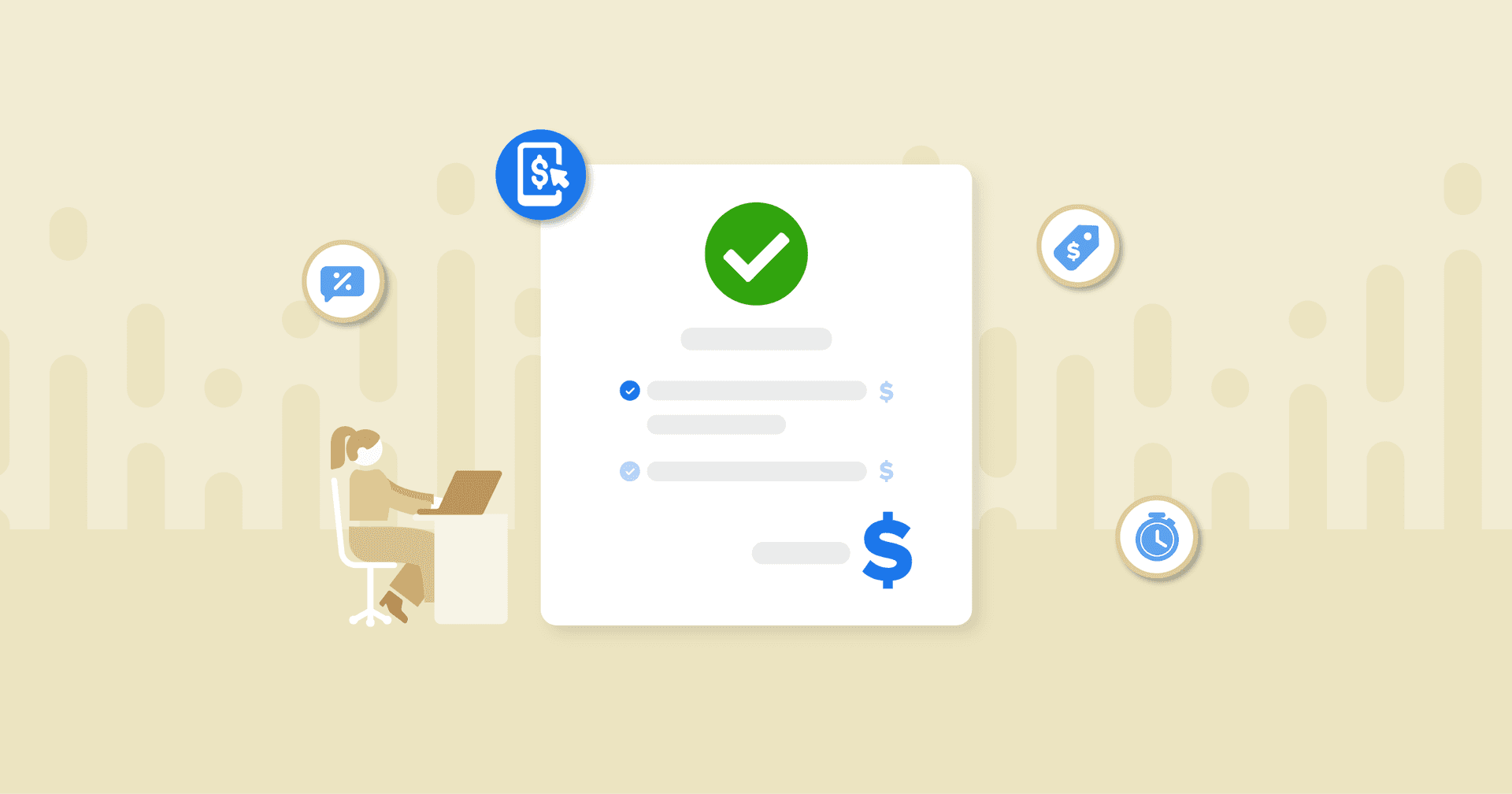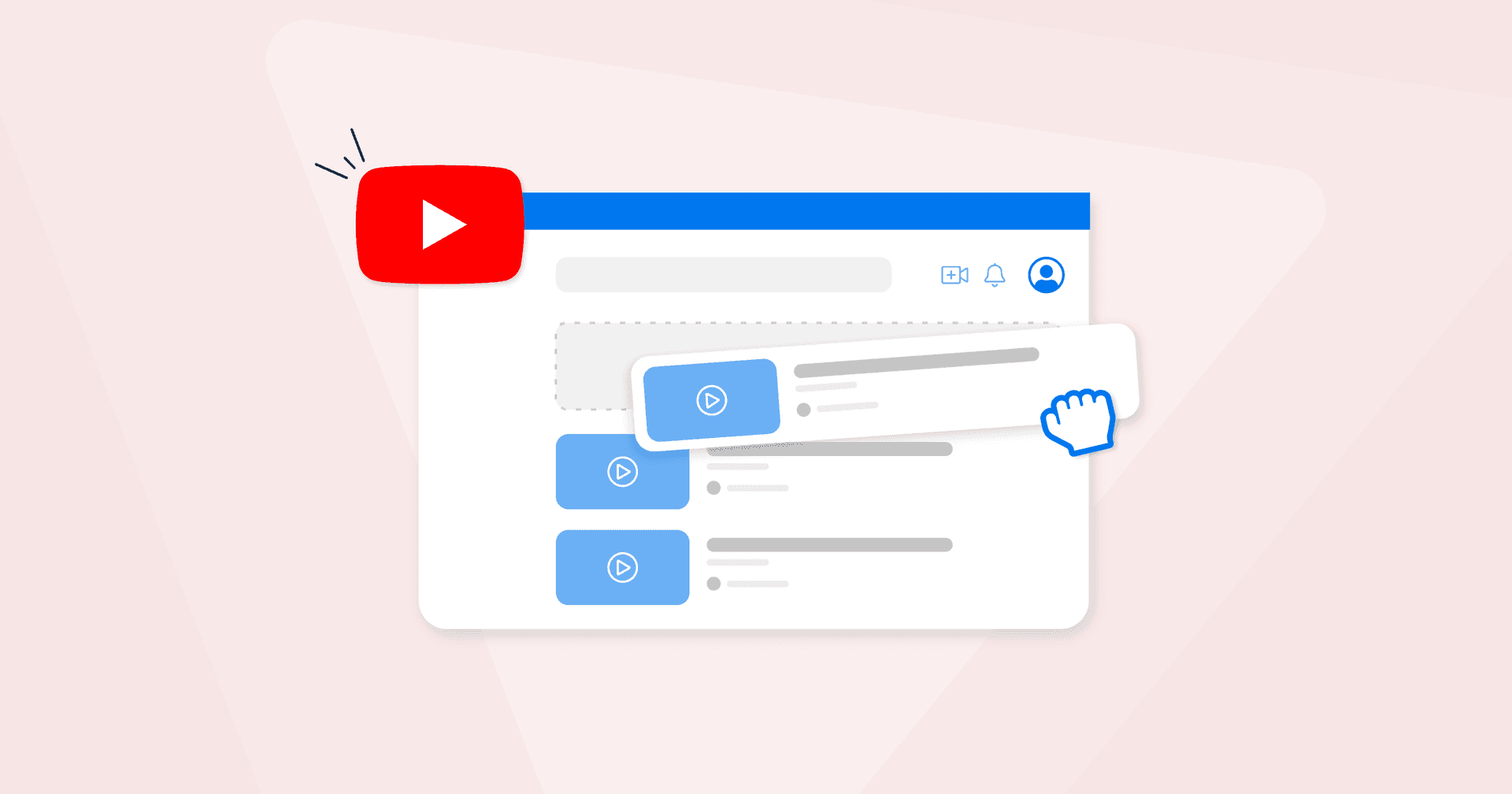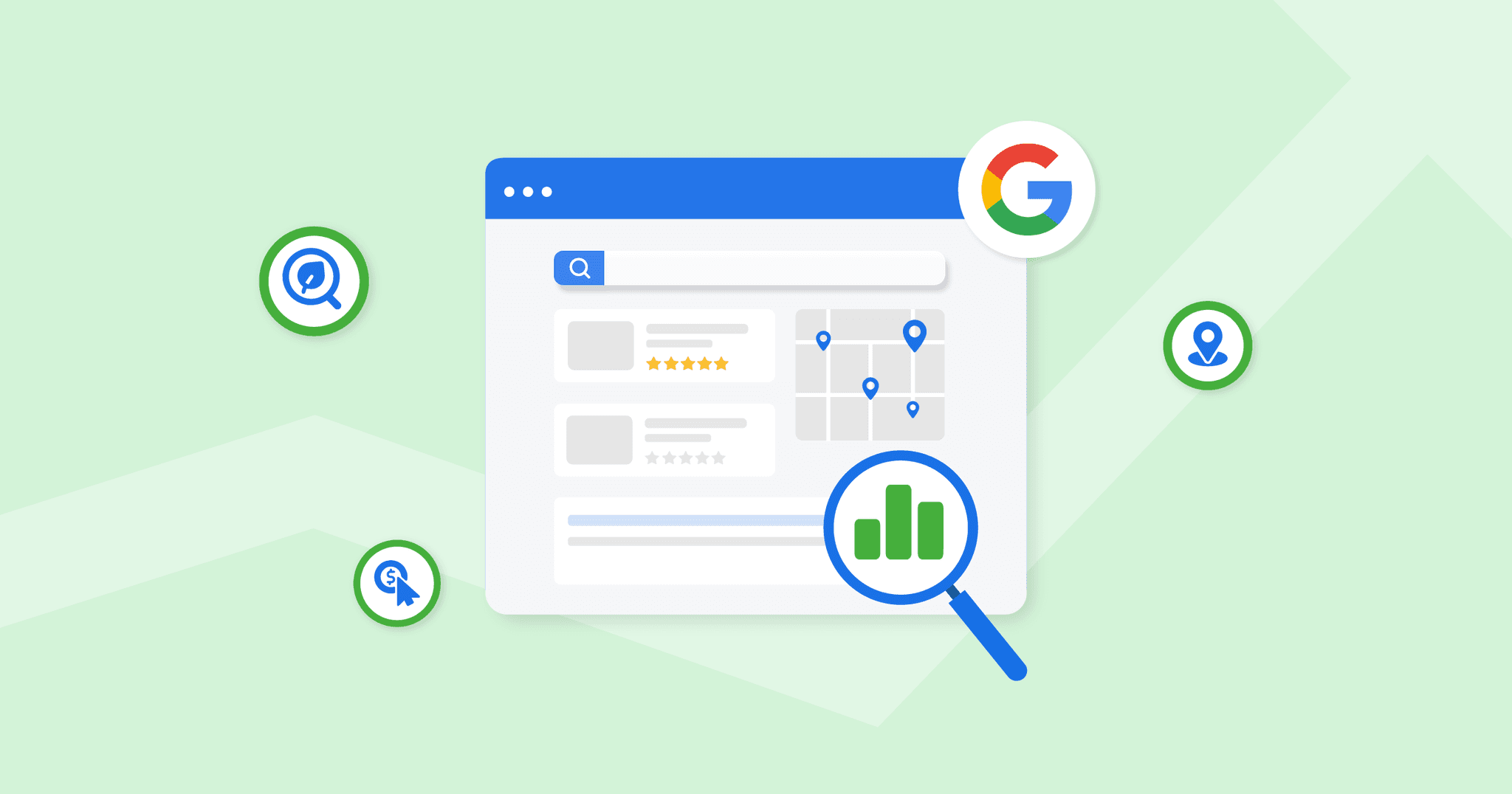
QUICK SUMMARY:
SERP analysis involves evaluating Search Engine Result Pages (SERPs) to understand the content types (organic listings, ads, featured snippets) appearing for specific keywords. This process helps determine the search intent behind queries, analyze competition, and identify ranking patterns. This guide provides a comprehensive approach to SERP analysis, enhancing your agency’s understanding and ability to leverage SERPs to drive the maximum SEO value for clients.
“Can we get our website to Google's first page by tomorrow?”
How often have you gotten this type of outrageous client request? Sure, your agency makes things look oh-so-easy, but when it comes to a first page ranking, it’s really not.

But the fact remains that your clients depend on your expertise and guidance. After all, those SERPs are not going to conquer themselves.
You don’t have to perform SERP analysis magic or resort to a quick fix, though. Instead, it’s about having the right approach, such as conducting keyword research and monitoring the competition.
Even if results don’t happen overnight, slow and steady wins the race. Achieving long-term SERP success is a great way to demonstrate expertise and keep clients coming back for more.
In this article, we’ll explore the importance of conducting SERP analysis, all the steps involved, and how it’s used to boost rankings.
What Is a SERP Analysis?
A Search Engine Results Page analysis means examining what’s displayed after inputting a target keyword into the Google search bar.
While it requires some groundwork, it’s a must-have strategy to improve your client’s SERP ranking. Here’s a breakdown of why it’s worth investing in.
Understand Search Intent | A SERP analysis reveals deeper insights about user intent, such as commonly used keywords and related searches. |
Scope the Competition | Analyzing a competitor’s SERP presence reveals their marketing strategies and uncovers opportunities for differentiation. |
Execute Keyword Research | A SERP analysis helps discover user-relevant phrases, especially from SERP features like the People Also Ask (PAA) section. |
Identify Top Local Businesses | See the top-rated websites for specific geographic areas. This provides a realistic look at the local business landscape. |
Great for Content Ideas | Exploring the SERPs is a strategic way to get inspiration, expand existing strategies, and produce search-relevant content. |
Determine Areas for Optimization | Use a SERP analysis to identify content gaps, missing metadata, slow-loading scripts, or other optimization issues. |
Create Professional SEO Reports in Minutes
Get Access to the Free SEO Report Template Today!
10 Types of SERP Features to Monitor
Before jumping into the analysis bit, it’s essential to understand the different SERP features. Here are the top ones to know.
1. Organic Listings
Organic listings are those search results that appear without any ad spend. These results are determined by Google's algorithm, which ranks pages based on keyword relevance, authority, content quality, and user experience. If a website shows up favorably on the SERPs, it may mean the following:
The content piece is considered valuable, informative, and engaging to users.
The website has followed SEO best practices (e.g., using user-relevant keywords, rich metadata, and fast page load times).
Content is regularly updated and fresh, which is favored by Google (and other search engines).
Reputable sources link to this website, which indicates a strong backlink profile.
The website offers a positive user experience, such as fast Page Load Times, a high Accessibility Score, and mobile responsiveness.
Although SEO efforts take time to produce ROI, high organic search rankings lead to increased traffic rates and even less reliance on advertising.
2. Paid Listings
If your clients need an extra boost, paid search listings are the way to go. They’re displayed at the top or side of organic listings, indicated by a “Sponsored” subtext. Here's an example with both of these listings below.
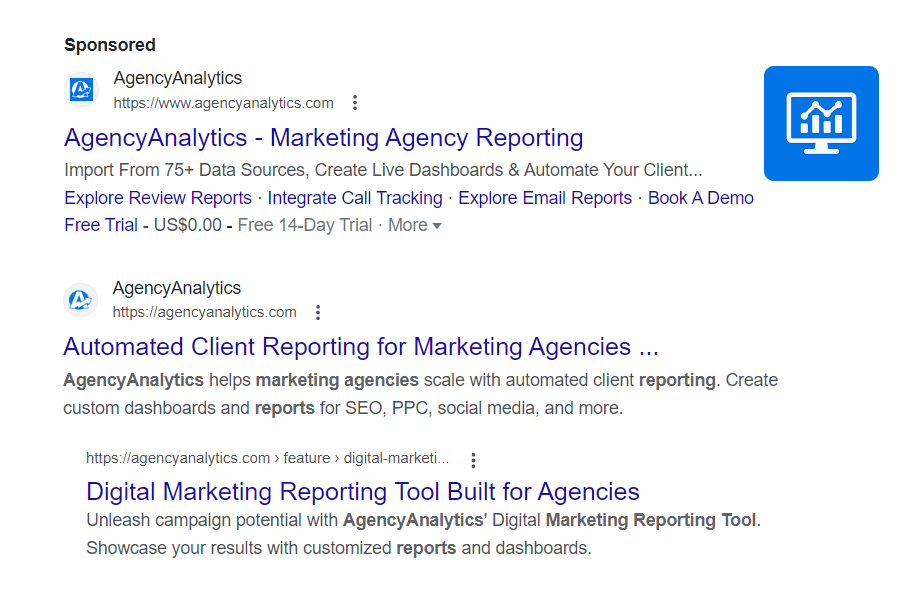
A paid listing is useful for:
Boosting website traffic quickly, which is handy for clients with limited brand visibility.
Getting traction for time-sensitive events (e.g., form signups for an in-person event).
Meeting other conversion-oriented goals (such as online sales).
While there are certainly benefits, paid search ads require strategic effort. This includes choosing an appropriate bidding strategy, setting a competitive budget, and creating a well-functioning landing page.
3. Featured Snippets
Ever seen this type of text on SERPs?

It’s a featured snippet–a concise and informative description that links to a website.
It appears above all other listings, meaning there’s high visibility and the possibility of increased Click-through Rates. This makes it one of the most desirable SERP features.
Here’s the thing–you can’t control whether your client’s website shows up in featured snippets. To increase the chances of this happening, create well-organized content that directly answers user questions.
Also known as "Position 0" on the SERPs, a Featured Snippet can get thousands upon thousands of eyes on your content! Featured Snippets are powerful, but you need to be very careful with how you go about getting them. Focus on high-quality content that is well structured, has proper schema attributed to it, and includes proper keywords to answer a user's question.
Rachel Jackson, Lead SEO Specialist, Wit Digital
Additionally, infuse search-relevant keywords in their content, headers, and Alt text. This makes it easier for Google to recognize and extract this information.
4. Rich Results
Rich results (also known as rich snippets) are additional details on a SERP beyond metadata. Essentially, they’re extra details to help users gather information quickly and choose the most relevant option. Rich results may include a variety of features, depending on the content. This may include:
User ratings.
Number of reviews.
Type of business.
Product price.
Delivery times.
Images or videos.
Recipe-related details (e.g., time to prepare, number of calories per dish).

Optimize for rich results by including structured data on your client’s website (e.g., microdata, JSON-LD). After you’ve completed this step, use a tool like Google Rich Results Test to see what may be displayed on search results.
5. People Also Ask (PAA) Section
As the name suggests, the People Also Ask (PAA) section shows related questions from other users. Aside from answering anticipated questions, it’s an opportunity to explore long-tail keywords. Use this information to add keyword diversity and attract a highly targeted audience.
Clicking on any of these questions reveals a rich result with a description and website link.
Look at the “People Also Asked” questions and results to ensure your client has content depth. Users scan more than they read. However, Google needs enough meat in the content to make it relevant for the keywords and topic. Focus on the user first and the search engines second.
Kristen Ewen, Director of SEO, Property Manager Websites

Similar to featured snippets, ensure your client’s content sufficiently addresses user concerns and is optimally formatted. This will increase the chances of showing up on the PAA section.
6. Sitelinks
Sitelinks are additional links to subpages of a website, displayed directly beneath the primary domain on a SERP. They offer users quick access to specific content, which saves time and effort.

Google’s algorithm automatically generates sitelinks, typically based on a user’s search query and its relevance to subpages. Since sitelinks improve SEO analytics like Impressions and Click-through Rates (CTRs), ensure your client’s website is well-structured.
7. X (Twitter) Carousels
If your client has a solid follower base and post consistency, their X (Twitter) page may be displayed on search engine results pages.
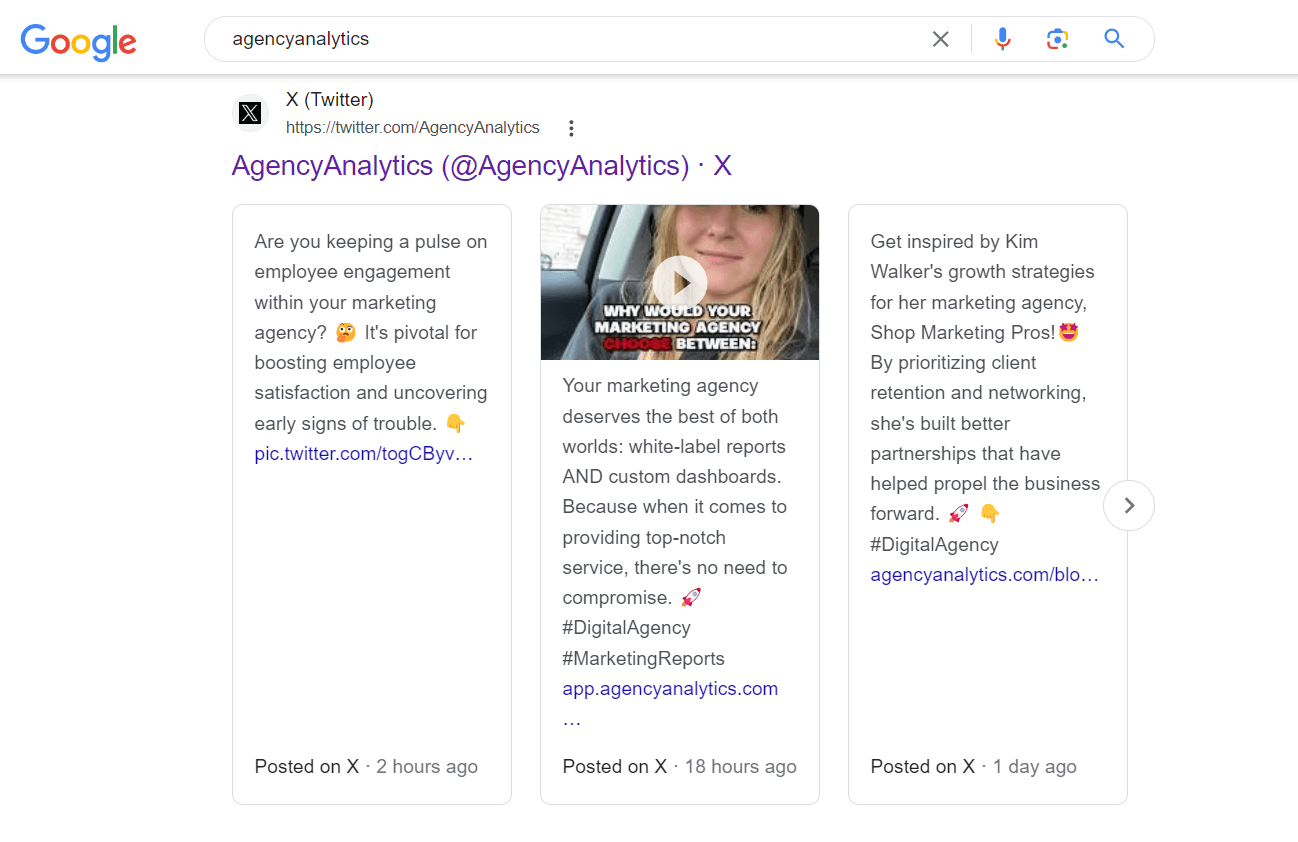
An active social media presence encourages users to click, follow, and engage. This SERP feature includes your client’s logo and brand name, further enhancing brand awareness.
While there’s no guarantee, stick to building a consistent X (Twitter) presence for a favorable SERP outcome.
Easily Track All Your Clients’ Social Media Metrics
Start Your Free Trial Today!
8. Image Pack
An image pack is prominently displayed if it complements a user’s search inquiry. This may include products, locations, recipes, and other searches with visual context. It’s meant to enhance the user experience and provide as much context as possible.
Use high-quality images that accurately represent your client's offering to increase the chances of showing up on an image pack. Be sure to include descriptive details where possible (such as color and design).
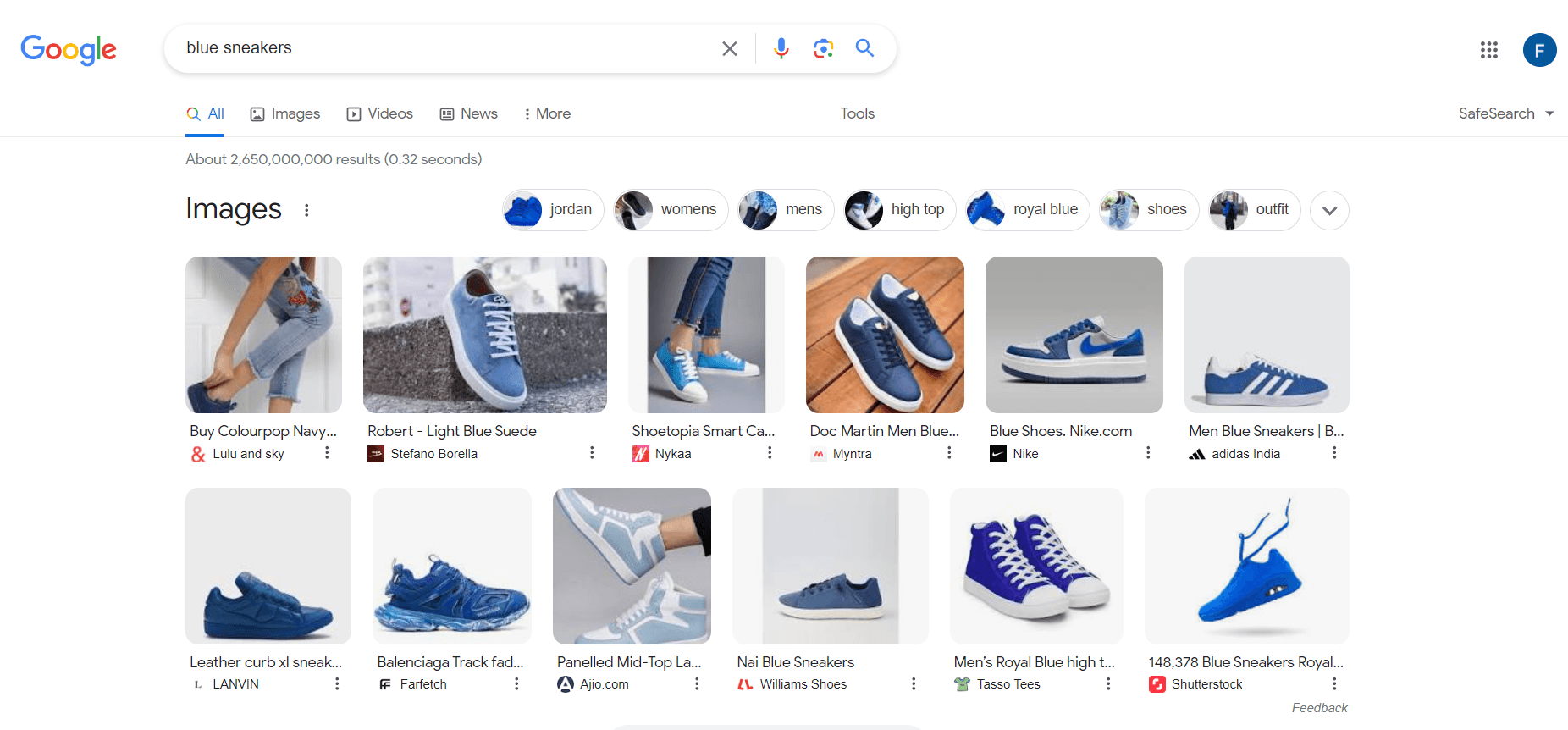
9. Local Pack
As the name suggests, Google’s Local Pack includes business listings specific to a geographic area. It’s displayed according to a user’s location (e.g., “dentist near me”) or when a local-sensitive term is used (e.g., “restaurants in Miami”).
The free Google Business Profile listing in the "Map 3 Pack" is currently the most prominent feature at the top of the Google local search results. Combined with those golden customer reviews, it's an extremely important part of local visibility.
Kira Krostag, CEO, Site Smart Marketing
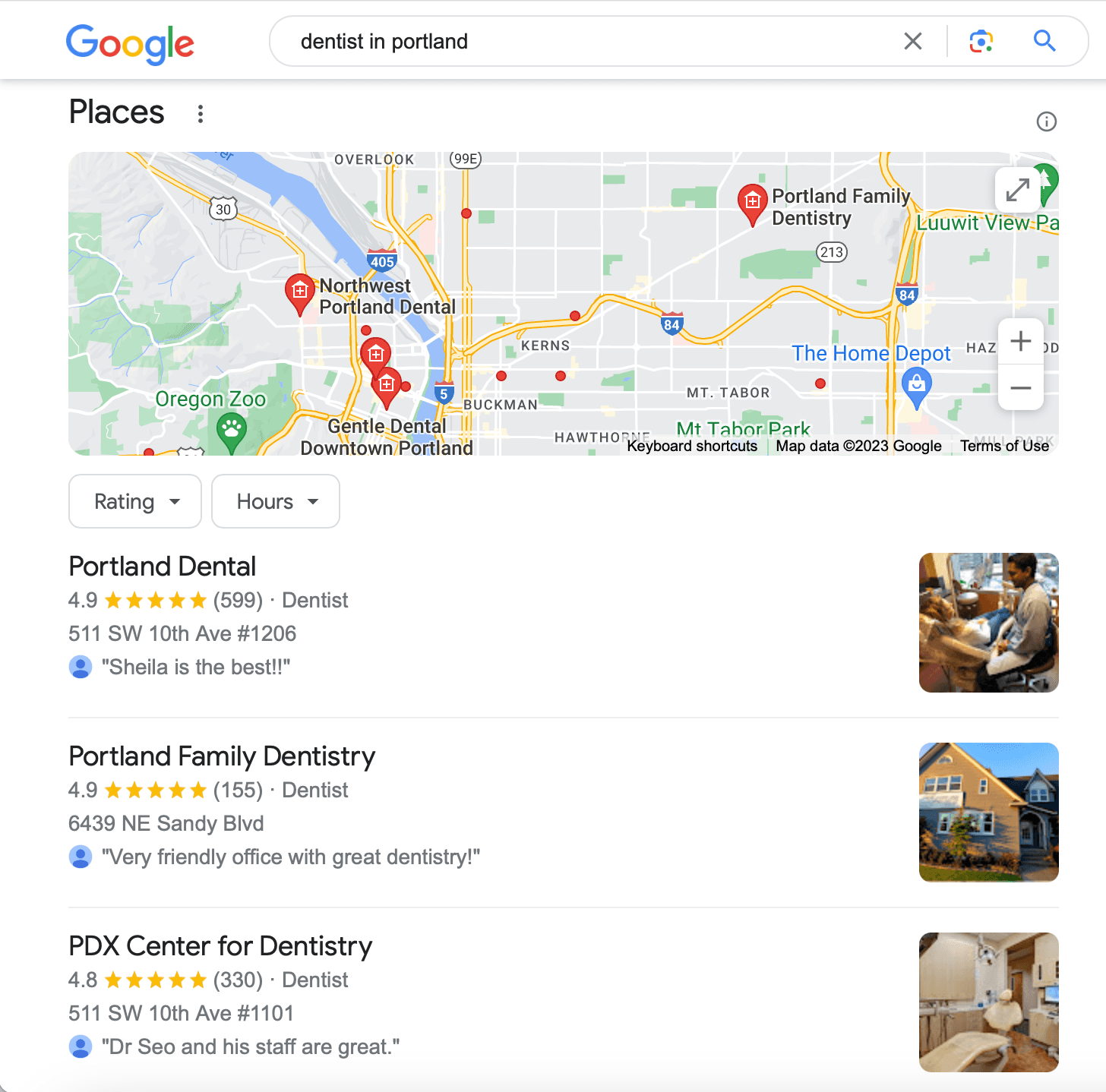
Google’s Local Pack usually includes:
Business details (such as name, contact information, website, and hours of operation).
A map that shows the business location and surrounding areas.
Star ratings from previous customers, including reviews.
This information is pulled from a Google Business Profile, so it’s a must-have for any local client.
Get the Free Google Business Profile Checklist
Keep these useful tips, insights, and ideas handy whenever you need them.
10. Shopping Results
If a user inputs a product-related term, Google may display relevant shopping results for a more seamless experience.
This SERP feature is particularly useful for retail clients that want to drive online sales and promote their products. Keep in mind–your client must own an online store (unsurprisingly) and sign up for the Google Merchant Center.
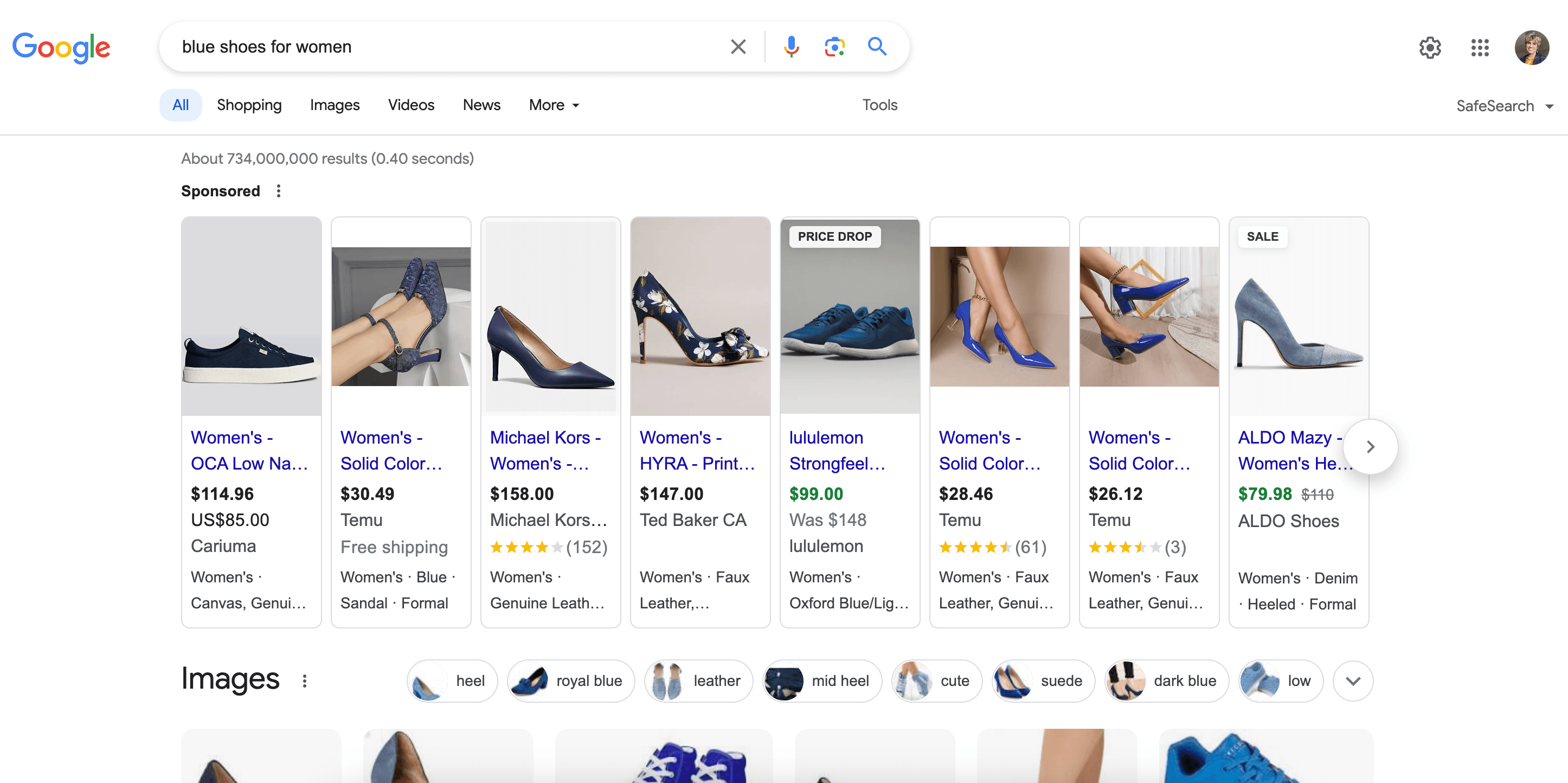
Google’s shopping results may include:
A business name and website product link.
High-quality, related product images.
A product description and additional details (like type of material).
Customer reviews.
How To Conduct a Comprehensive SERP Analysis
Now that we’ve covered the ins and outs of search engine results, it’s time to perform an in-depth SERP analysis. Here’s exactly how to do it.
Step 1: Identify Search Intent
First, consider the end goal, followed by user keyword search intent. To contextualize this further, let’s say you’ve got a client with a flower shop in Oregon.
Examples of SERP goals include:
Generating more organic search traffic to build brand awareness.
Getting online floral sales from PPC search ads.
Improving Google Local Search ranking for a specific geographic area.
Ranking for target keywords, such as “seasonal flower deals.”
If your floral shop client wants more online sales, their potential customer will use words like “buy” or “purchase.” Alternatively, if this client is focused on establishing niche authority, they should address user inquiries like “best flowers to give on anniversaries.”
To give you a more structured understanding, consider the following types of search intent and relevant examples.
Type of Intent | Description | Example |
Informational | Users with this intent may be seeking explanations, answers, or baseline knowledge about a specific topic. | “How to preserve fresh cut flowers”; “Tips for arranging flowers.” |
Commercial | A user expresses commercial intent while researching products or services. This is also a sign of purchase potential. | “Flower shop reviews Oregon”; “Best florists for online delivery.” |
Transactional | At this point, a user has decided on their desired product or service. Their searches are focused on completing a conversion. | “Buy lilies near me”; “Order carnations online next day delivery”. |
Navigational | Users express navigational intent when they’re already familiar with a website. They’ll use brand-related search terms to reach their intended destination. | “1-555-Flowers website”; “Order tracking Best Bouquet Co.” |
Step 2: Keyword Research
Now that you’ve figured out search intent, it’s time to do keyword research. This part of your SERP analysis will streamline your focus and help clients reach their intended audiences.
To get started:
Create a list of target keywords, terms, and phrases.
Use a tool like Google Keyword Planner to uncover related terms or phrases.
Include geographic keywords for locally-based keyword research (e.g., “floral arrangements in Oregon” and the term “near me”).
To monitor current keyword SERP performance, use Google Search Console to see relevant data like Clicks, Impressions, CTRs, and Position.
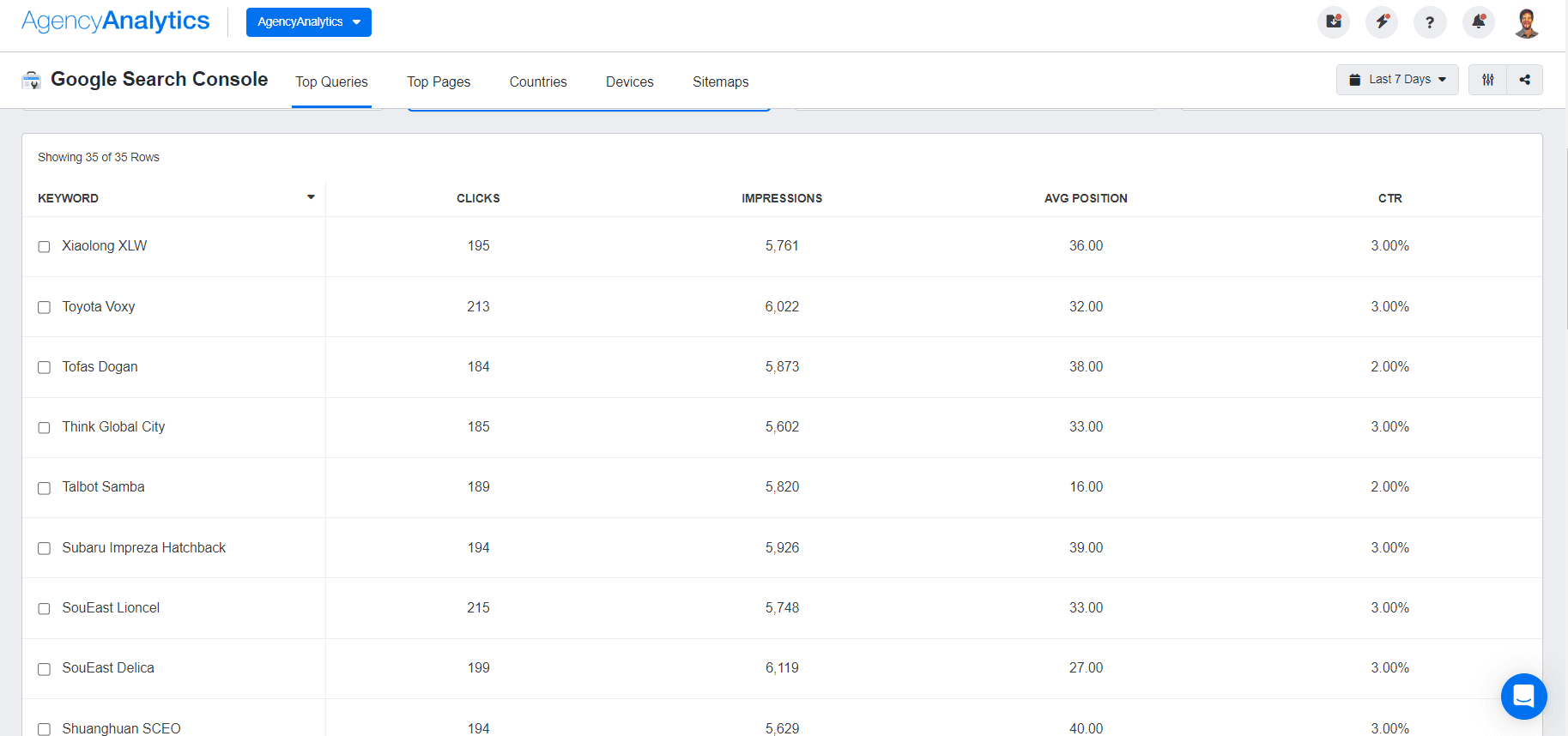
Streamline your client’s keyword research and analyze their search performance. Perform a quick SERP analysis in just a few clicks–try AgencyAnalytics by signing up for a free 14-day trial.
Step 3: Conduct a Competitive Analysis
After you’ve completed the keyword research, it’s essential to consider the competitive landscape. Use SERP analysis tools like Ahrefs or Semrush to:
Identify your client’s competitors. Additionally, ask your clients to list their own top competing sites. This is particularly important, as their known competitors may have different target keywords from the ones you outlined.
Evaluate keyword difficulty. Some target keywords may have a high level of competition, making it more challenging to show up on SERPs. In these scenarios, focus on less saturated terms or long-tail keyword variations. For example, a term like “purple peonies for sale in Oregon” may have less competition than “purple peonies.” However, it’s more targeted and may yield better SERP results.
Examine competitor backlink profiles to get a better understanding of domain authority. This helps you to understand a competitor’s perceived credibility and how many links lead to their website.
Assess competitor content, such as metadata, ad copy, blog posts, and landing pages. Use this exercise to understand a competitor’s target audience and create unique content angles for your client.
Step 4: Improve Your Client’s Strategy
After you’ve done the heavy lifting, it’s time to put those SERP analysis findings into action. At this stage, focus on:
Optimizing content. Ensure all key elements are included for best results (like a meta description and page title).
Creating content that factors in search intent and the overall customer journey. Remember to use the correct type of language (e.g., “how to” for informational intent and “buy now” for transactional intent).
Download Your 39-Point SEO Content Checklist
Everything you need to make sure your agency is publishing optimized content.
Diversifying your client’s strategy to ensure they’re not relying on one particular keyword. This means incorporating different types of keywords, exploring less competitive options, and uncovering new phrases.
Improving the website user experience to prevent a high bounce rate. Ensure fast loading times, mobile responsiveness, and accessibility to all users.
Keeping a watchful eye on the competition. Regularly monitor SERP rankings, the emergence of new competitors, and how your client performs. When needed, repeat the SERP analysis steps we’ve outlined for best results.
5 Best Tools for SERP Analysis
An in-depth SERP analysis is only possible with the right approach. Realistically, you’ll get only so many insights from a basic Google search. SERP analysis tools automate the entire process, so you don’t have to resort to tedious manual work–here are the top ones to consider.
1. Google Search Console
Google Search Console is a must-have staple for any SERP analysis. This free tool provides critical insights about a website's search performance, such as SERP ranking for specific keywords, impressions, and click-through rates.
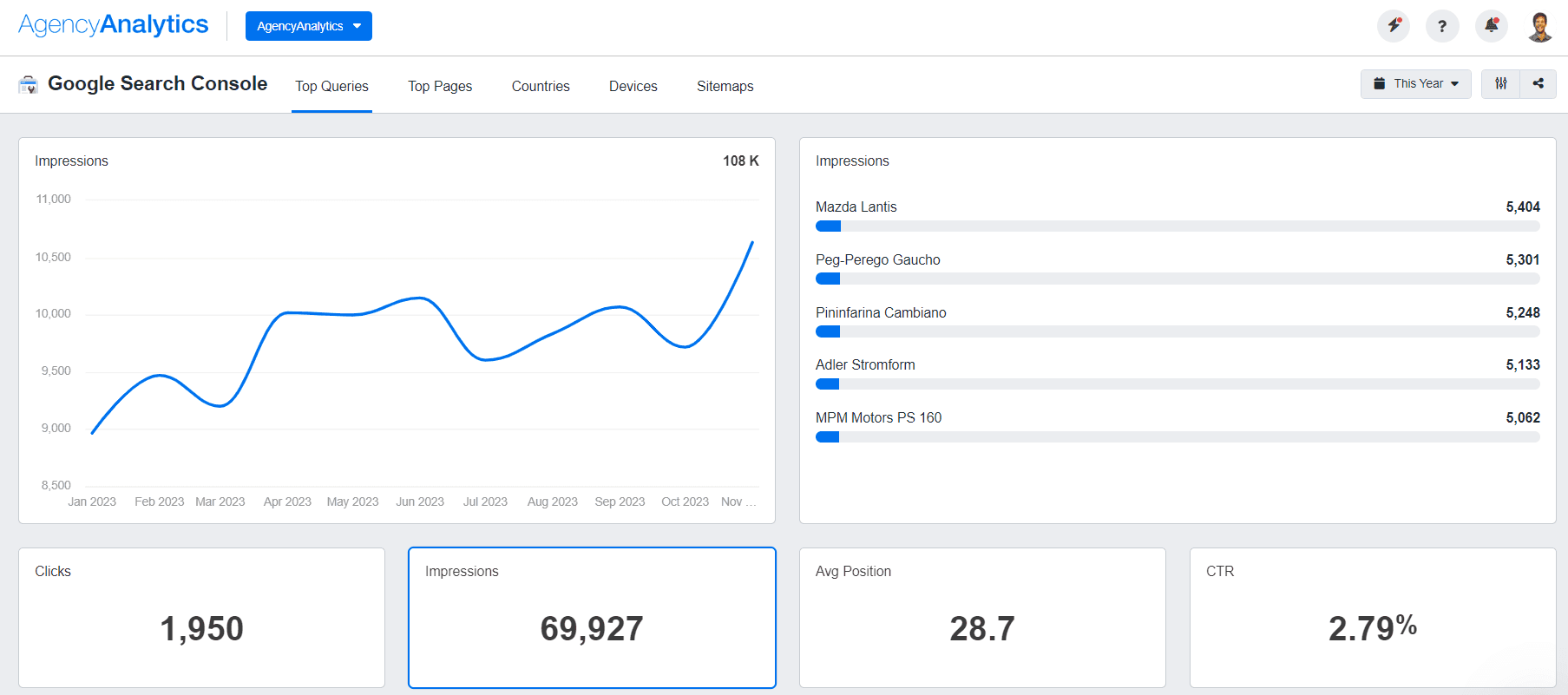
2. Semrush
Semrush is a powerful SERP analysis tool that offers keyword research (for both SEO and PPC), competitor analysis, and local SEO tracking. Agencies will most benefit from their Guru plan ($249.95/month) or a Business plan ($499.95/month).
Use the Semrush integration in AgencyAnalytics to show how website content you've created for your client is already yielding results. In a few clicks, easily report on their backlink profile, referring domains, and competitor insights.
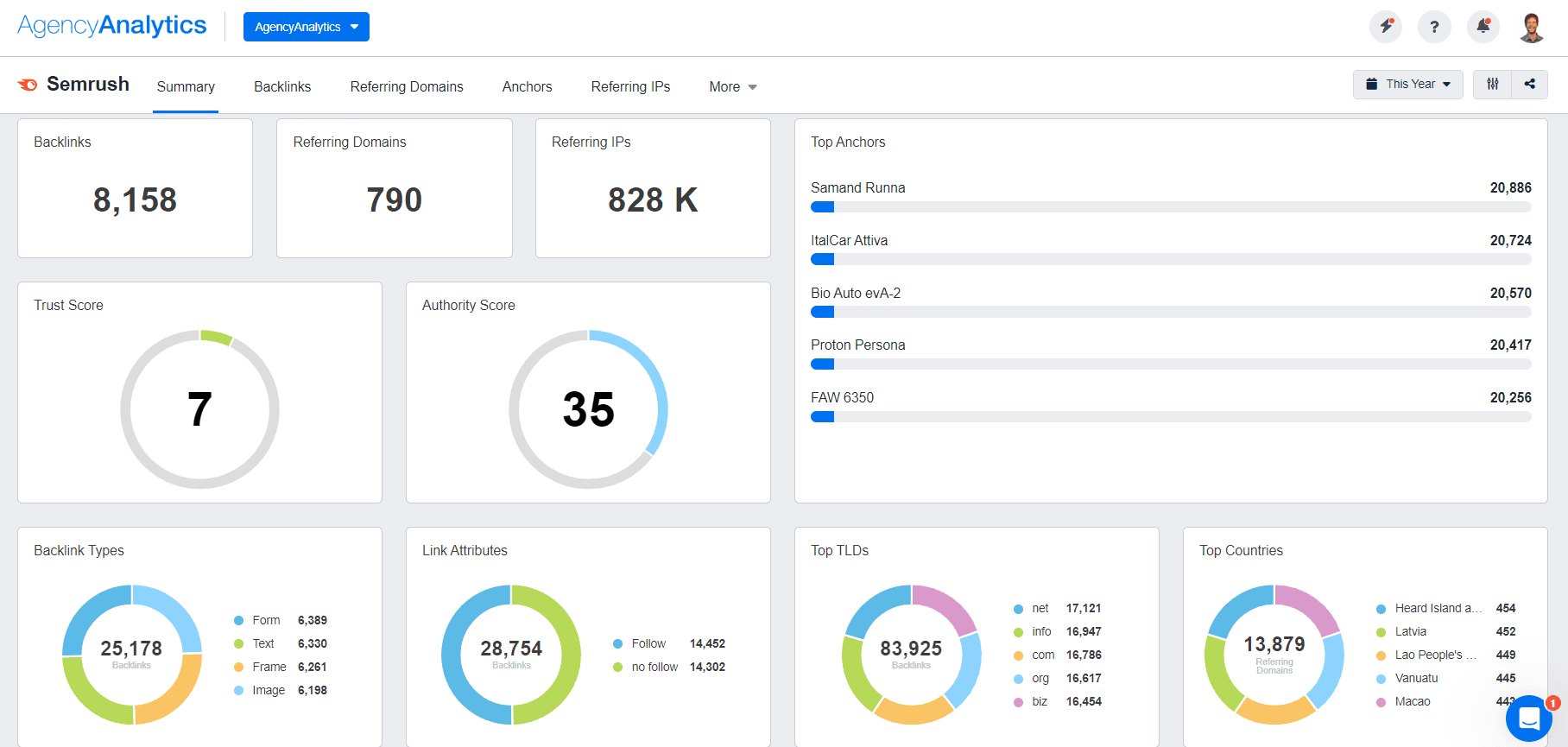
3. Ahrefs
Ahrefs is another popular SERP analysis tool with robust features like keyword research, backlink analysis, and content ideation. Their Advanced plan starts from $399/month, which is a suitable option for agencies. Their Enterprise plan starts from $999/month if you've got larger operations.
After you’ve put your client’s content strategy in motion, use the Ahrefs integration in AgencyAnalytics to monitor traction over time. Get insights on their backlink profile, top referring domains, and the best-performing anchor text.
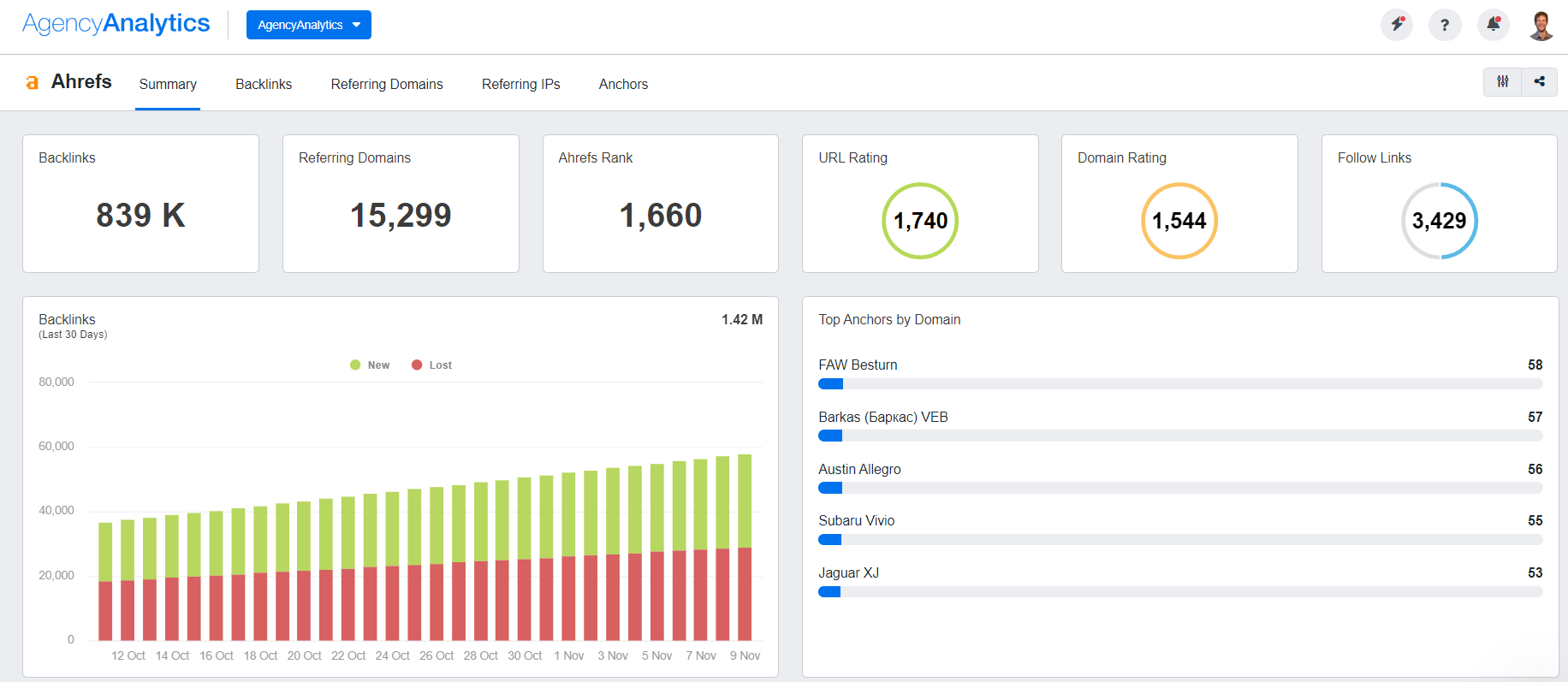
4. Moz
Moz is also handy for SEO analysis, providing backlink analysis, keyword research, and receiving a domain rating.
Their Pro package costs $179/month and includes a free 30-day trial. Enterprise-level agencies may benefit from the Premium package, priced at $599/month.
Need a way to automatically retrieve backlink insights, page authority, and anchor text performance? Explore the Moz integration in AgencyAnalytics to consolidate those metrics into a single reporting interface.

5. SE Ranking
SE Ranking is a comprehensive platform that provides backlink analysis, on-page SEO checks, a SERP tracker, and local marketing rankings.
This search engine optimization tool has a Pro plan that starts from $87.20/month and a larger Business plan from $191.20/month.
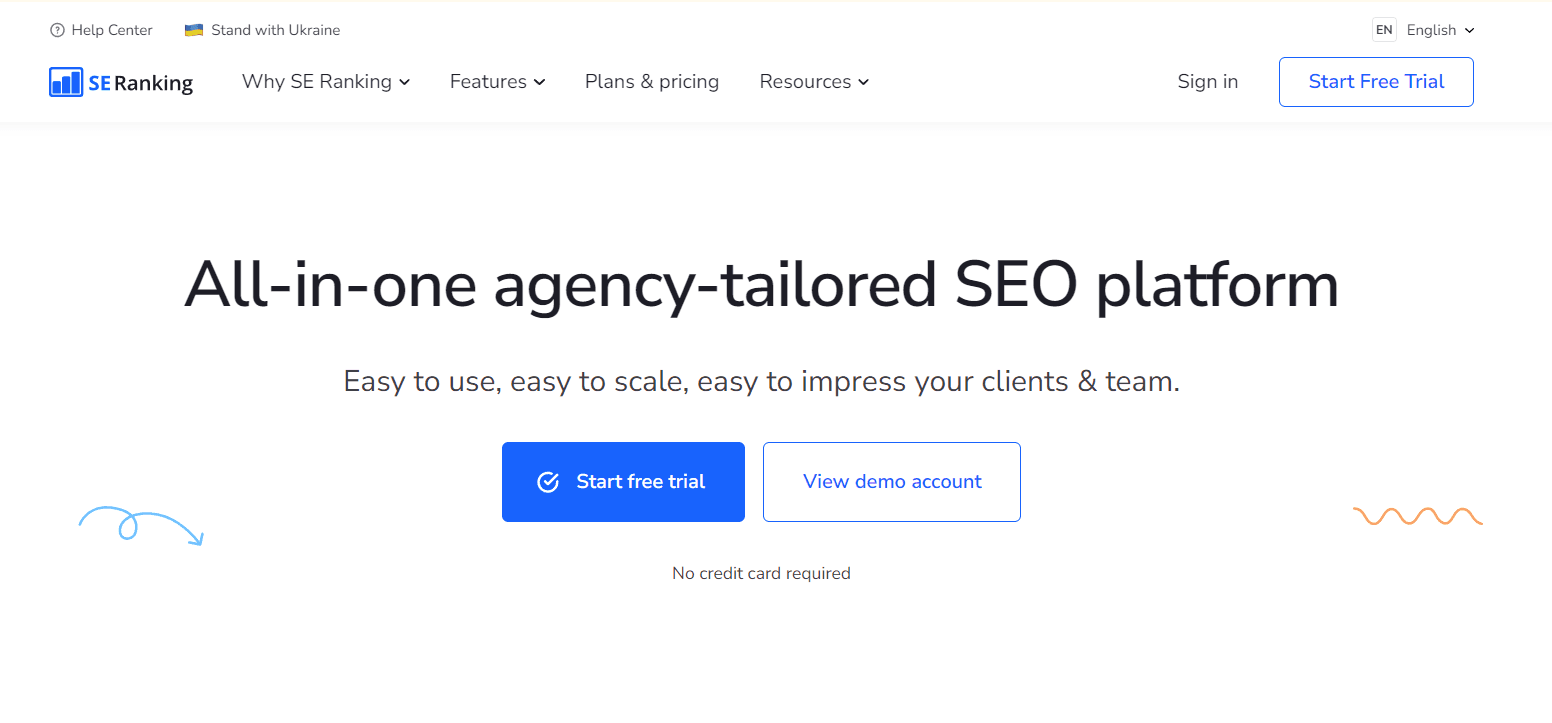
Adopt a Strategic Approach to SERP Analysis
As we’ve explored, a SERP analysis is a vital part of keeping your clients on top of their search game. For agencies, it’s about more than just a Google search.
To provide real value, remember to:
Optimize your client’s content. Ensure it’s user-relevant, keyword-enriched, and fresh.
Keep a constant eye on the competition. Remain adaptable by updating your client’s SERP strategy when needed.
Use SERP analysis tools. It’s the best way to access multiple SERP insights like keyword analysis and competitor tracking.
SERPs aside, your clients have other marketing efforts in the works. Whether it’s social media or large-scale programmatic advertising, you’ll need a way to consolidate that data in one place.
That’s where a platform like AgencyAnalytics comes in. With access to over 80 integrations and counting, this tool streamlines reporting and maximizes your valuable billable time.
Present SEO analysis insights in visual dashboards and reports in a few clicks. Automate the retrieval of key metrics by using AgencyAnalytics, free for 14 days.
Receive Agency Growth Tips, Delivered to Your Inbox

Written by
Joe started his career as a developer and since has created many internet businesses. He has now moved on to the position of CEO and has enjoyed all the challenges it has brought.
Read more posts by Joe Kindness ›Get Started for Free


